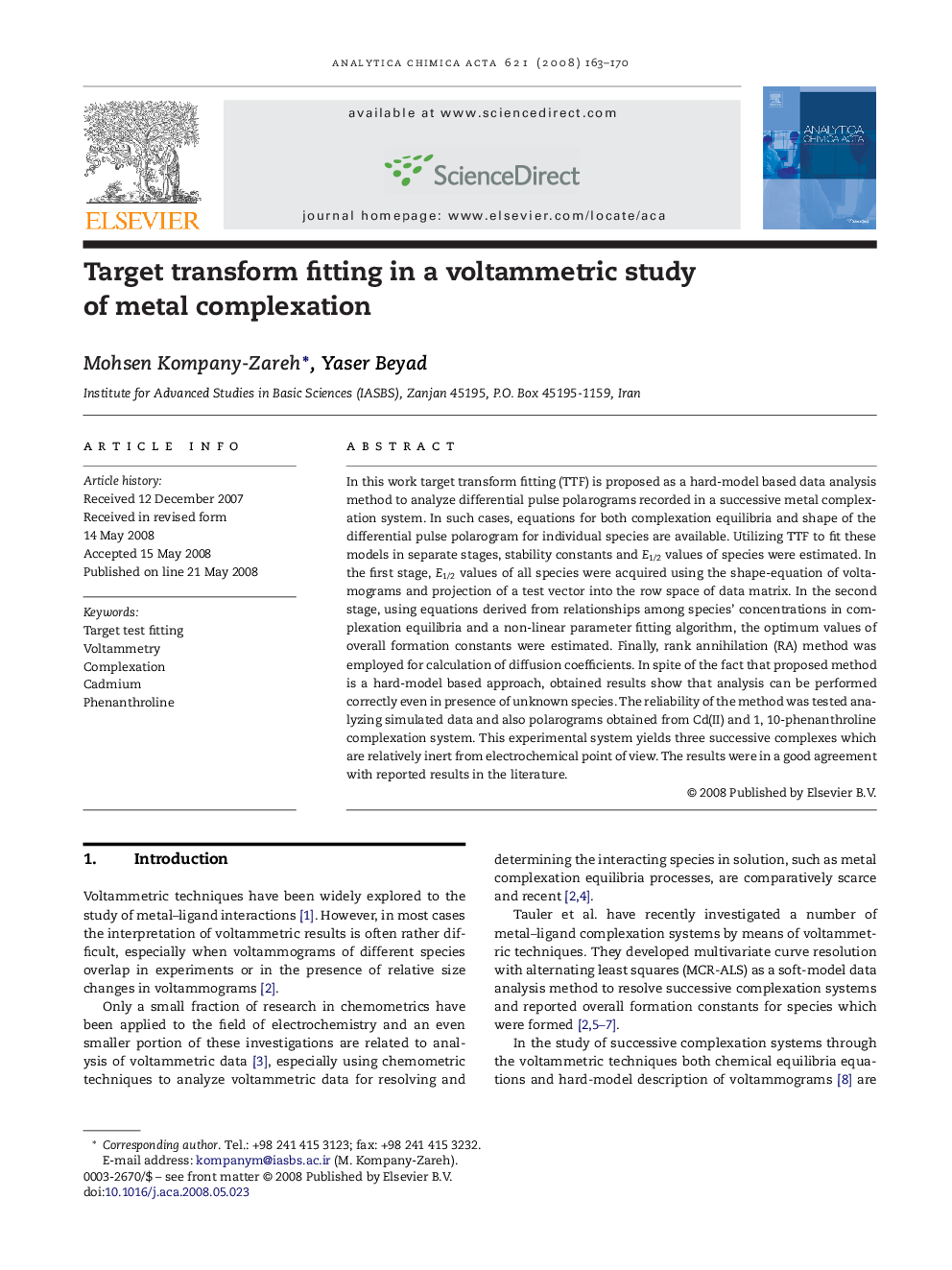| Article ID | Journal | Published Year | Pages | File Type |
|---|---|---|---|---|
| 1170071 | Analytica Chimica Acta | 2008 | 8 Pages |
Abstract
In this work target transform fitting (TTF) is proposed as a hard-model based data analysis method to analyze differential pulse polarograms recorded in a successive metal complexation system. In such cases, equations for both complexation equilibria and shape of the differential pulse polarogram for individual species are available. Utilizing TTF to fit these models in separate stages, stability constants and E1/2 values of species were estimated. In the first stage, E1/2 values of all species were acquired using the shape-equation of voltamograms and projection of a test vector into the row space of data matrix. In the second stage, using equations derived from relationships among species' concentrations in complexation equilibria and a non-linear parameter fitting algorithm, the optimum values of overall formation constants were estimated. Finally, rank annihilation (RA) method was employed for calculation of diffusion coefficients. In spite of the fact that proposed method is a hard-model based approach, obtained results show that analysis can be performed correctly even in presence of unknown species. The reliability of the method was tested analyzing simulated data and also polarograms obtained from Cd(II) and 1, 10-phenanthroline complexation system. This experimental system yields three successive complexes which are relatively inert from electrochemical point of view. The results were in a good agreement with reported results in the literature.
Related Topics
Physical Sciences and Engineering
Chemistry
Analytical Chemistry
Authors
Mohsen Kompany-Zareh, Yaser Beyad,
